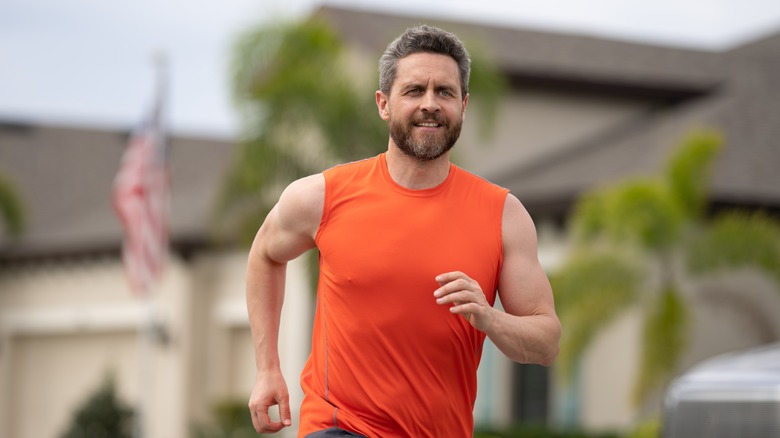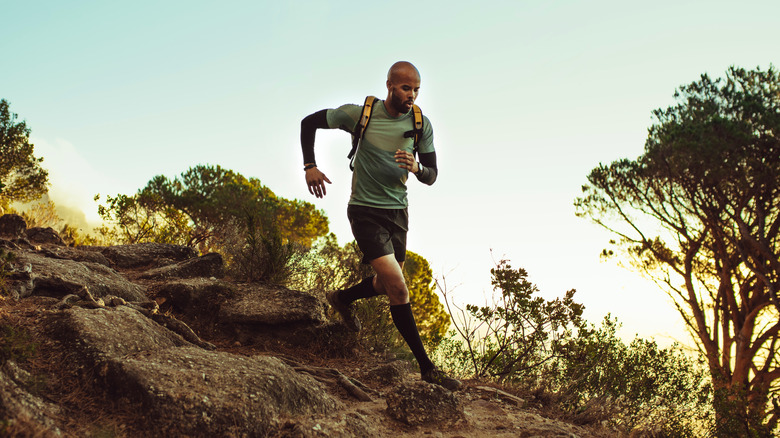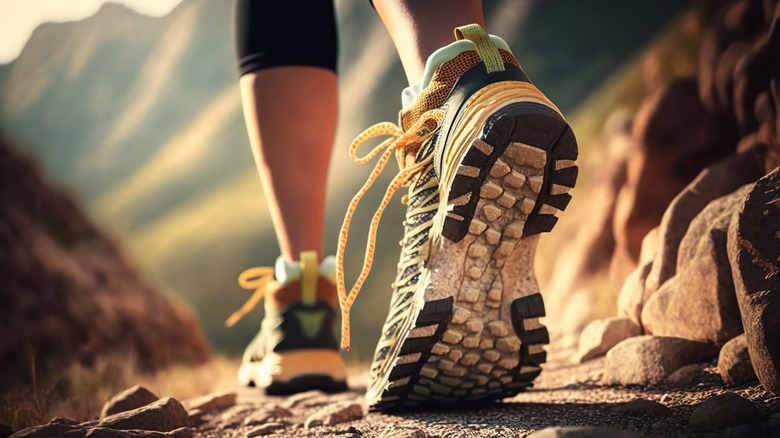Want To Burn More Calories? Try Switching Up Your Running Surface
Nothing feels like a good run. Your lungs get to open up, your legs get a good burn, and your belly enjoys the post-run brownie. Whether you're training for a marathon or enjoying a periodic 5K, you burn a good number of calories as a runner. However, running the same distance at the same pace can get you stuck in a calorie rut.
Sure, you could do interval training or speed work to try to burn more calories, but why not hit the trails? Tackling the hills will get your heart rate in the orange (or red) zone until you reach the top. Running downhill might be easier on your cardio system, but your quads will burn to stabilize you so you don't take a tumble. Trail running gives you a softer surface for your joints, but that doesn't make it easier. Your major muscles will have to do a ton of work to push off the softer surface, and the muscles in your calves and feet will work to stabilize you on the rocky and sometimes muddy path.
A 180-pound man can burn up to 1,103 calories an hour by running on the trail, and a 155-pound woman can torch 950 calories (per Cool of the Wild). Compare that to 816 calories for men and 703 calories for women running at a 10-minute-per-mile pace (per MyFitnessPal).
The benefits of trail running
You might have a favorite hill on your favorite running route, but road hills aren't as steep as the ones you'll find on the trail. They also lack the twists and turns that a small running trail will have. This makes road running a little less challenging and burns fewer calories.
Rather than run at the same pace on the trails, you can turn it into a good interval workout. If you have a short hill, try doing short, 10-second sprints up the hill and walk or jog easy on the downhill. Do 10 sets for a high-intensity workout. Longer hills can make longer intervals, so you'll need to adjust the effort uphill so you can make it to the top with good form.
Running on the trails is also an exercise in mindfulness. You have to pay attention to all the obstacles on the trails, such as tree roots, rocks, and puddles. Not only that but leaping over those obstacles will give you a good spike in your cardio and muscles.
Hitting the trails can also be a nice break from the paved roads, even if you just jog or walk. You might not burn as many calories in an hour, but you'll still be working your quads, calves, hamstrings, and butt as if you were running. If you already have the cardio fitness to run for an hour, you might find that you can hike a little longer and get a good endurance workout (per Hikers University).
What you'll need for trail running
You don't have to book a trip to The Rockies or The Alps to begin trail running. Many local parks have gravel or dirt trails, or you can look for some cross-country courses if you're afraid of getting lost. Your regular running shoes will work on the less technical trails, but you might want to check out trail runners or hiking shoes to help you grip trails that are rocky, muddy, or hilly. You also might want to skip wearing your favorite running tutu or stylish tops because you're going to get dirty and you could tear your clothing on some of the bushes.
Depending on the time of year, you'll need to pack some bug spray and watch out for ticks. A headlamp is always a good idea, especially if the sun might set during your run. Trails can also get a little confusing if they're not well-marked, so get a trail map and bring your phone so you don't get lost. Many apps like AllTrails and Komoot can help you navigate the trails and give you suggestions about which trails are best in your area. You also might have your favorite playlist for your road running, but you'll want to leave your earbuds in your car (per Daily Burn).



